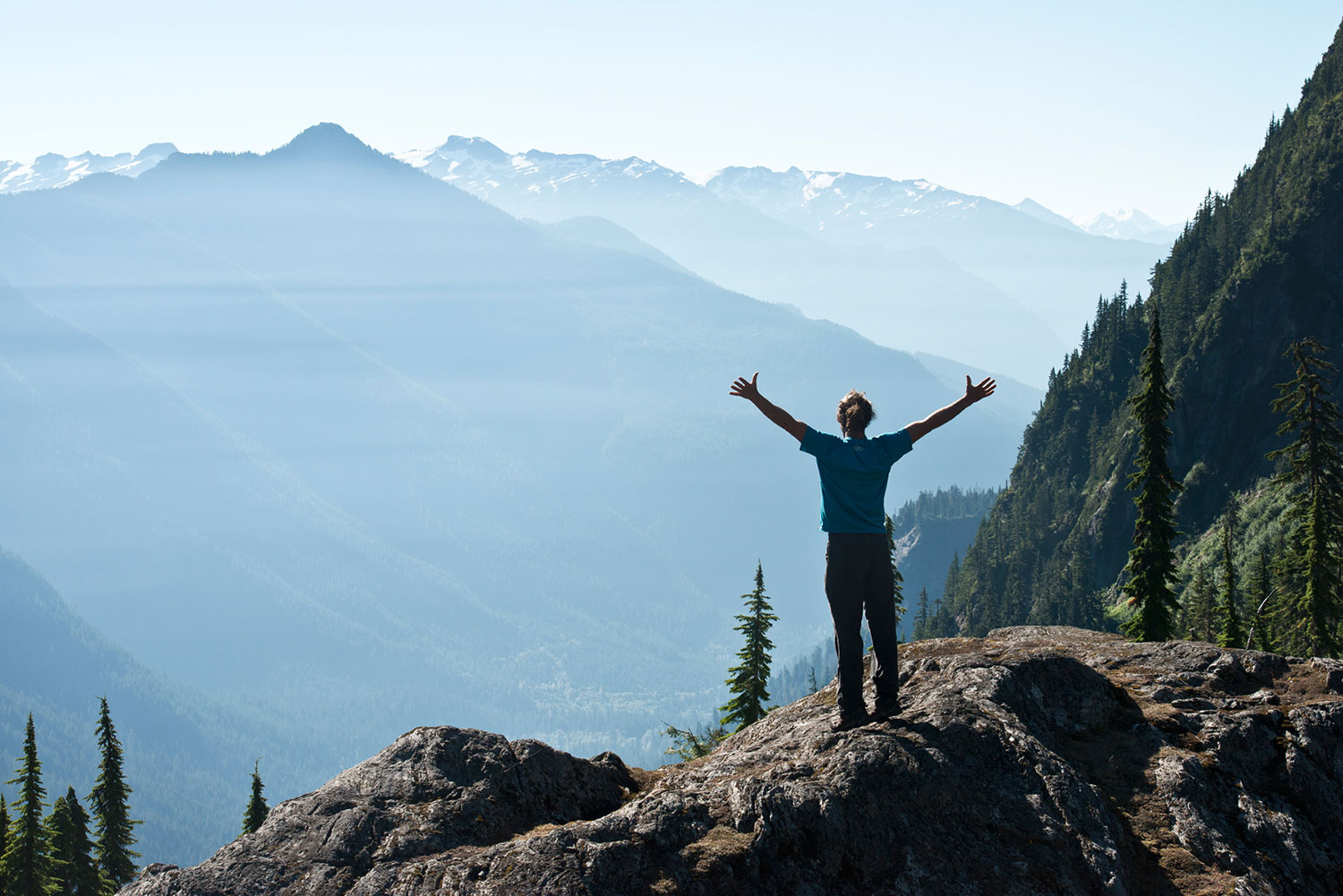Do you ever feel like you want to disconnect, leave the comfort of home in the rearview mirror, and escape into the nearest wilderness?
Nothing can rejuvenate the mind more than winding down a trail through spectacular backcountry. Yet, what if hiking a known trail isn’t enough? It’s become a predestined path, a wilderness thoroughfare, and you crave a more adventurous spin on your backpacking adventure.
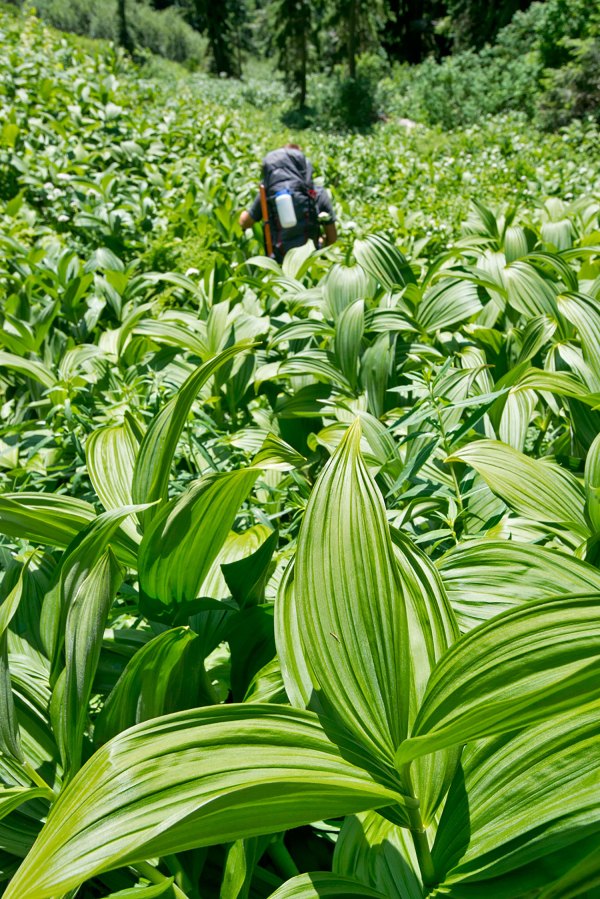
For most of us, quality time outside is always appreciated. And yet, there’s a special place in my heart for those times when I leave the trail behind and strike out on my own, across untrampled landscapes. This is where my heartstrings are plucked with each step over moss-covered rocks, murmuring streams and vibrant meadows.
So how do you plan your own off-the-grid adventure?
Set a Goal
For me, cross-country hiking has been an evolution. At first my goal was to discover those areas that for whatever reason didn’t have a trail. Perhaps I wanted to see a summit or a lake and just because there wasn’t a trail didn’t mean I couldn’t go there.
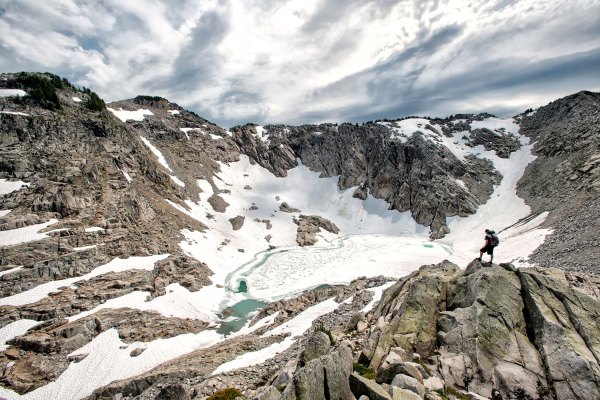
Later, my ideas expanded. I wanted to circumnavigate a peak, link alpine lakes together, traverse ridgelines, explore wilderness areas, connect valleys, etc. The options for adventures were unlimited.
Here are some tips I found useful. At first, start small. Stay in familiar country that you’ve hiked numerous times and expand outward from there. Use the trails that are already established and wherever they end, continue on and see where they go.
Scour guidebooks and backpacking forums for various off-trail hikes that others have already figured out. You’ll find that many climbing guides will detail routes that take you to summits, some technical. Often the approach routes, before the real climbing begins, can offer incredible hiking.
Orienteering
For me, all planning is in preparation for my eventual case of, “Where am I?” Symptoms include head scratching and hiking in circles. Be cognizant of the very real possibility of getting lost for short periods of time. That means you are out there on your own. Being alone in the wilderness can feel empowering, but it can also quickly feel overwhelming if you haven’t prepared properly.
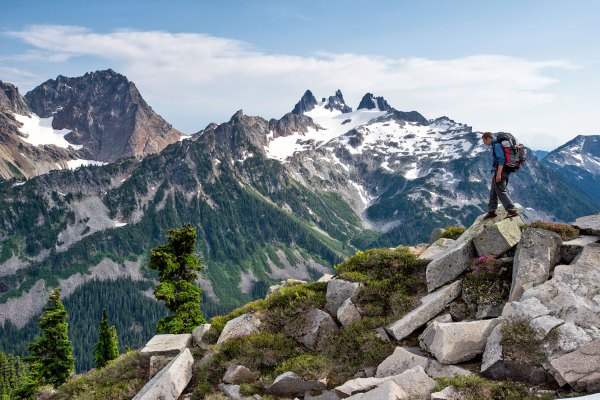
Off-trail travel isn’t easy and can quickly become dangerous for the inexperienced hiker and navigator. Here are some important considerations:
- Know how to navigate using a map. I recommend some classes for orienteering. Your local REI store has classes and events to get you comfortable using a map and compass. Study mapping software and climbing guides and research routes online.
- Draw your route on a map and/or plug it into your GPS.
- Trails are often your conduits in and out of valleys into the high country where most off-trail travel occurs. Study those access and exit points, as well as escape routes in case of bad weather, etc.
- Just because a mile on the trail takes X amount of time does not mean it will translate to off-trail travel. It can take a day to travel a mile in certain kinds of terrain, especially if you are searching for ways around obstacles or you have to search for the best means of getting from point A to B. Build that extra time into your schedule.
Safety and Preparedness
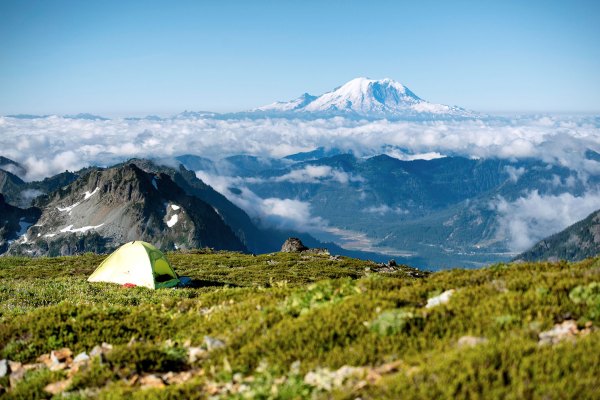
- Know your limits. Pick your terrain according to your skill. Are you comfortable scrambling? Bushwhacking? Fording rivers?
- Tell someone close to you about your proposed route, travel dates and expected return date before you depart.
- Check the weather and area conditions. Weather can change in an instant so pack accordingly with layers of clothing and rain gear!
- Carry extra food and clothes in case you are out longer than expected.
- Wear solid hiking shoes or boots with grippy soles. Waterproof is best!
- Be prepared to address basic first aid. A deep cut, scratch, allergic reaction, blisters, twisted ankle, etc. can quickly turn an easy day trip into a medical emergency.
Other Items to Consider
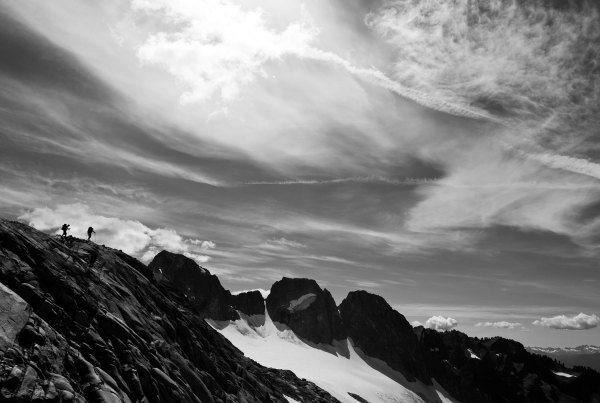
- A GPS device and a map. Not just any map, but a detailed map. Green Trail maps won’t work in this case. I use maps at SCALE 1:30,750. You can buy these at a map store or online, or print out with the use of mapping software. Waterproof paper is a bonus and most outdoor stores offer it. A good rule I’ve found is that a GPS tells you where you are and a map tells you where you are going. I often leave the GPS at home and travel by map alone. For me, a GPS can be a distraction. Depending on the trip, being off the grid can mean leaving behind all electronics. But family or time constraints make the use of a personal locator beacon (PLB) or satellite messenger comforting.
- Trekking poles for uneven terrain.
- Bug spray, bug net and emergency kit, especially since slips and falls, as well as interactions with bees and other insects, are more common when off-trail.
- Long pants are especially welcome when hiking through dense brush.
- Short gaiters keep dirt and twigs out of your shoes or boots.
- A sharp camping knife.
- A good pair of gloves for grabbing onto shrubs. Durable leather gloves are preferred, as they will stop thorns and slivers.
- Extra socks, since sand and grit can get into your shoes much more easily off-trail.
- Optional: traction devices for your boots and/or a lightweight ice axe if you’ll encounter perennial snow patches on passes and in colder ravines.
Rules and Regulations
Not every landscape is appropriate for off-trail travel. In Utah, for example, national parks and BLM lands with delicate cryptobiotic soil crust require you to walk only on trails, sandy washes or rocks. Know what the rules are. Do your research on the National Park Service, U.S. Forest Service and Bureau Land Management websites. Some places have designated zones in which you are permitted to hike or camp only on a given day or days. Some permits are free at the trailhead. In other places there are no permits at all.
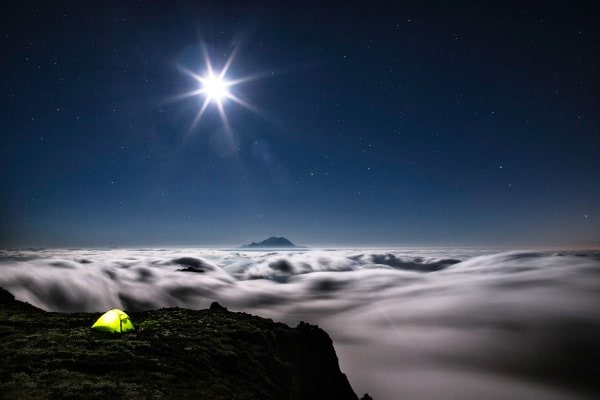
In any event, treading lightly is important. Many places have seen people hike through for decades, and no trail exists, no campfire rings, no sawed-off trees—no signs at all. The reason for that is due to those good backcountry stewards that came before you. Continue to preserve those special places by practicing Leave No Trace ethics. When you leave, a place should be in better shape than when you found it.
